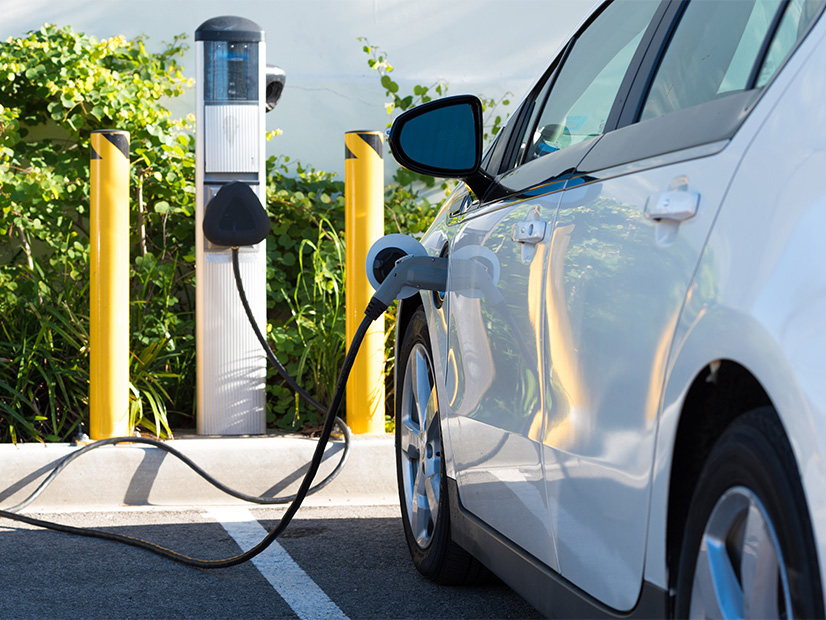WASHINGTON — Puerto Rico will get $2 million in federal funds to install electric vehicle chargers on highways across the island; Texas will get a whopping $60 million.
Those two figures are, respectively, the low and high ends of the individual allocations from the Infrastructure Investment and Jobs Act (IIJA) EV infrastructure funds, announced jointly by the Department of Transportation and the Department of Energy on Thursday.
The states, Puerto Rico and D.C. will receive $615 million for 2022, the first installment of the $5 billion the IIJA will send over the next five years under the National Electric Vehicle Infrastructure (NEVI) program. To receive the funds, each state will have to submit an EV infrastructure plan detailing how it will use the money. A program guidance document, outlining plan requirements, was also issued on Thursday.
“We know that EVs are the way of the future,” said Andrew Wishnia, the DOT’s deputy assistant secretary for climate policy, speaking virtually to a roomful of more than 100 state energy officials at 2022 Energy Policy Outlook Conference of the National Association of State Energy Officials (NASEO). “The auto industry is already making huge strides and moving the industry in this direction, but we need to ensure three things. One, the shift will happen quickly enough to make a meaningful difference in the fight against the climate crisis; two, that EVs and EV chargers are made in America by American workers, and three, that they’ll be available and accessible enough for every American driver to reap the benefits.”
DOE, NASEO and the American Association of State Highway and Transportation Officials (AASHTO) are also working on a memorandum of understanding on helping states develop their plans and deploy chargers, Wishnia said.
Although not yet finalized, he said the MOU will take advantage of “AASHTO’s and NASEO’s ability to convene state departments of transportation and state energy offices to leverage collaboration, foster lessons learned and best practices and further the likelihood of a successful and seamless national EV charging network.”
The goal for NEVI is to ensure deployment of EV chargers along highways and other major transportation routes so that “drivers in cities large and small, towns and rural communities, [can] take advantage of the benefits of driving electric,” said Energy Secretary Jennifer Granholm in a press release announcing the allocations.
Transportation Secretary Pete Buttigieg said the NEVI program “will help us win the EV race by working with states, labor, and the private sector to deploy a historic nationwide charging network that will make EV charging accessible for more Americans.”
The Federal Highway Administration (FHWA) will review the state plans, which are due Aug. 1. The FHWA will determine whether plans are approved by Sept. 30, according to a memo and guidance document.
“Because NEVI formula program funds are directed to designated Alternative Fuel Corridors to build out a convenient, reliable, affordable and equitable public charging network, states should first prioritize investments along the interstate highway system,” the memo says.
“The federal share payable for the cost of a project funded under the NEVI formula program is 80%,” according to FWHA’s notice of the allocations.
The Top 10 States
The $1.2 trillion IIJA provides a total of $7.5 billion for EV infrastructure. The $5-billion NEVI program allocates funds to each state based on a formula, while another $2.5 billion will go to competitive grants for smaller towns or tribes that may not qualify for the NEVI funds.
Providing an overview of the guidance document, Wishnia said that it “focuses on providing information on the strategic deployment of EV chargers on interstate and designated highway corridors, while also establishing technical guidance” on where stations should be located and their charging capacity. More detailed information on minimum standards and requirements for EV chargers will be issued later this year, he said.
The formula used for the allocations is based on the formula used for federal highway programs. Those allocations ensure each state receives 95 cents on the dollar for the taxes their residents pay into the federal Highway Trust Fund via taxes on gasoline and diesel.
While each state could receive millions in 2022, the top 10 states will be receiving almost 48% of the funds. In addition to Texas, the top states are California, Florida, New York, Pennsylvania, Illinois, Ohio, Georgia, Michigan and South Carolina.
According to the guidance document, states that do not submit plans or whose plans are not approved, can have their funding redirected to competitive grants for individual cities or other local jurisdictions. States with unapproved plans will have an opportunity to work with the FHWA to revise them.
Good Jobs and Clean Environment
Reactions from clean energy groups focused largely on the economic impact and the jobs the funding will produce.
Jason Walsh, executive director of the BlueGreen Alliance, a labor-environmental organization, called Thursday’s announcement “a big deal.”
“The new NEVI program makes exactly the kind of investments that prove we can have both good jobs and a clean environment when we center and uplift the workers who make the transition to cleaner transportation possible, and the communities most impacted by climate change and the poor transportation policies of the past.”
Andrew Reagan, executive director of Clean Energy for America, an advocacy group representing the clean energy workforce, also applauded the announcement. “Investments like this ensure more Americans in more parts of the country can enjoy the benefits of the clean energy transition more quickly,” he said. “And over 3 million American clean energy workers are ready, willing and able to make that happen.”




